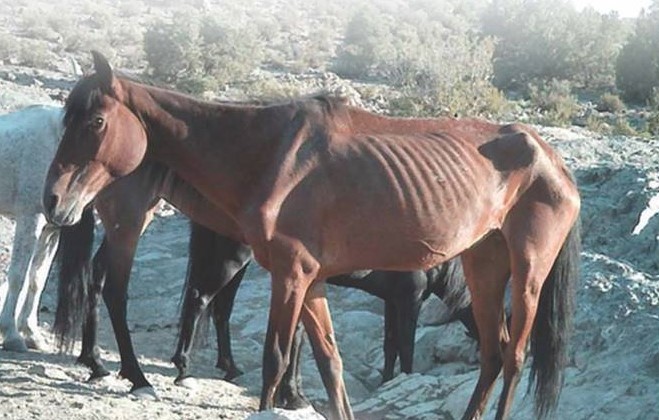

One of the risks in writing on a proposed action in the Nevada Legislative process, at this point, things can change rather quickly while at the same time things can stay without changes for a long period of time. As this article is being drafted, the Senate Natural Resources committee has not taken any action since Senate Joint Resolution (SJR) 3 was introduced on February 25th.
SJR 3 urges Congress to provide funding to reduce the wild horse and burro populations to appropriate levels.
Through the “Whereas” statements of SJR 3, points are made to offer a basis of background to present common understanding of Wild Horse and Burro management. As an example, the leading “Whereas” states that “the Wild Free-Roaming Horses and Burros Act of 1971, as amended, ensured free-roaming horses and burros existing on lands managed by the Bureau of Land Management (BLM) or U.S. Forest Service in 1971 would be protected and managed as valued components of our public lands.”
The value in making this point is firming up the understanding that Wild Horse and Burro areas are actual locations – as opposed to the notion that they should be allowed to over-populate any and all federally managed lands.
Further laying the groundwork for the established foundation for the program — SJR 3 a “Whereas” statement covers sustaining herds “while ensuring a thriving natural ecological balance with wildlife, livestock and other public land uses in accordance with the Multiple-Use Sustained-Yield Act of 1960.”
“Appropriate management levels” (known more commonly as AML) is noted as well as the manner of how free-roaming horse and burros populations are set and once the populations go over the appropriate management level, the numbers of free-roaming horses and burros were defined as excess to the carrying capacity of the land.
Nevada’s populations of free-roaming horses and burros are identified as making up over 50 percent of all free-roaming horses and burros there are. It is also spelled out that Nevada’s established appropriate management has been set and that level is 12,800 horses and burros. The reality is covered on how Nevada’s Herd Management Areas are on average 300 percent over the appropriate management level with 50,000 on BLM lands and 2,500 on U.S. Forest Service lands. In addition, there are also approximately 5,500 other feral or estray horses and burros in areas outside of the jurisdiction of the Wild Free-Roaming Horses and Burros Act of 1971.
SJR 3 identifies that a national working group of various interests came to agreement for proposing a pathway to reduce the horse and burro populations to the appropriate level using non-lethal methods and that the BLM’s 2020 “Report to Congress: An Analysis of Achieving a Sustainable Wild Horse & Burro Program” is hinged on Congress providing sufficient short and longer-term funding for success.
With the connection of funding – short and longer term – identified, the purpose of SJR 3 is to put the 81st session of the Nevada Legislature on record of urging Congress to provide the commitment for sufficient funding to reduce the excess free-roaming horses and burros to achieve the appropriate management level. It is stated that the process of getting populations to appropriate management levels should be carried out within six years to protect and restore the health and viability of public lands and habitat for wildlife, free-roaming horses and burros and other uses into the future.
This resolution came forward through the interim’s Committee on Public Lands, but even more important was originated by a working coalition of wildlife advocates and sportsmen groups. The support of these interests increases the emphasis on how over-population of Wild Horse and Burros is devastating wildlife habitat and rangeland conditions overall.
Although the inability to properly manage free-roaming horses and burros might have once been a problem with the federal land management agencies, the current situation rest within Congress. Foolish restrictions placed on use of the management tools available in the Wild Free-Roaming Horses and Burros Act of 1971 dug a hole that the present over-population conditions can’t be addressed without significant sums of funding. SJR 3 notes in an important “Whereas” that “free-roaming horse and burro populations double every 3 to 5 years.”
Timely and aggressive reductions of the wild horses and burros on the range is going to require a serious level of funding for not only the removal of excess animals, but the agreement for non-lethal methods is also going to require funding for housing animals in off-the-range facilities.
Without specifically using the words to say so, SJR 3 encourages Nevada’s members in the U.S. House and U.S. Senate to take a leadership role in moving forward within the federal legislative branch to begin the long road to appropriate management levels of free-roaming horse and burro populations.
There is plenty of reason to support passage of SJR 3 and appreciation for all who are advocating for the purpose of achieving appropriate management levels.
By Doug Busselman, NFB, Executive Vice President
